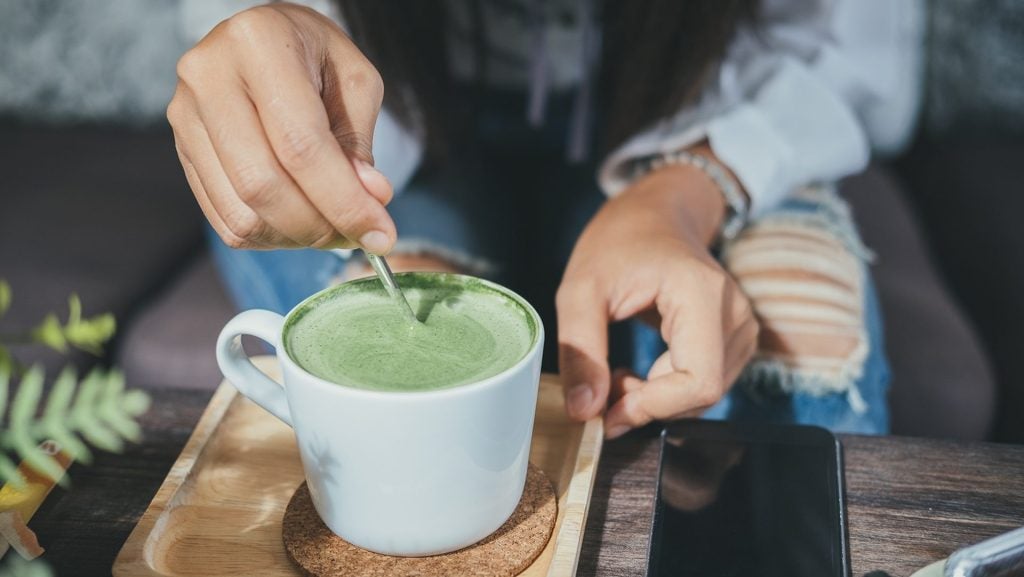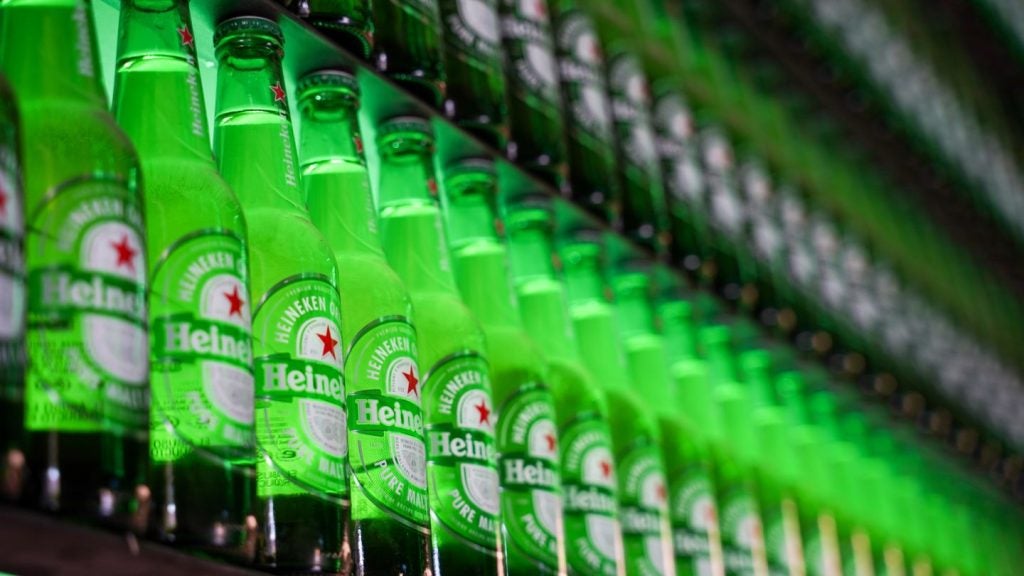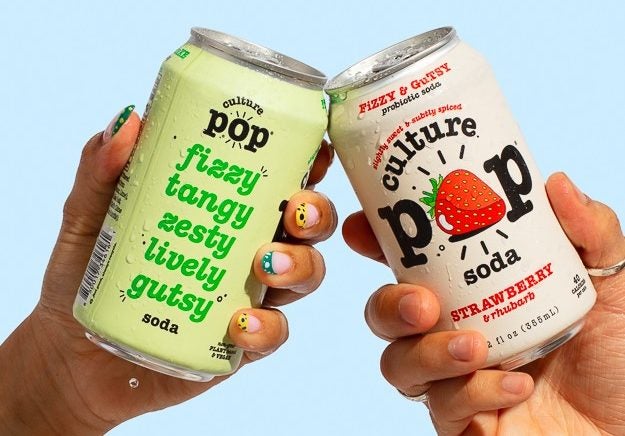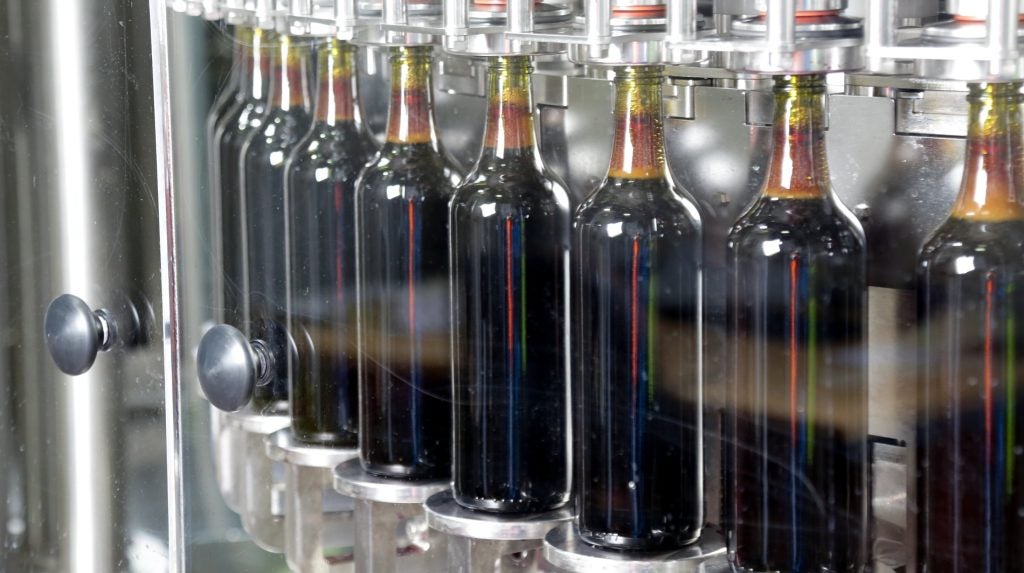How London turned green: the relentless rise of matcha
Even Dua Lipa Is Drinking Matcha – Here’s Why The Wellness Set Loves It
The new green giant: how matcha took over the world
The headlines on the popularity of matcha have come thick and fast in recent months. Fuelled by interest in health and the Instagrammable nature of its colour, particularly among younger consumers, sales of the Japanese green tea have grown in several markets and there has been a burst of beverages (and foods) launched to ride the matcha wave.
However, while there is broad agreement sales will continue to rise, some are unsure just how big the market for matcha will become and there are concerns a shortage of supplies could cool the growth seen in the category.
“It’s definitely sky-rocketed during the pandemic and post-pandemic,” Newby Teas global marketing director Aneta Aslakhanova says. “There was a small demand from connoisseurs but it wasn’t a mainstream thing. The way it has grown is something that has been absolutely extraordinary in the tea market to see.”
Matcha’s inroads in foodservice
However, for all the headlines and the recent jump in demand, it’s important to step back and take stock. London-based Newby Teas, which focuses on high-end hospitality and upscale retailers like Selfridges, may have seen its matcha sales rise “multiple folds” in the last five years but it remains a small part of the company’s revenues, Aslakhanova says.
Within retail, matcha’s presence remains limited. The price of the tea means it has made its strongest inroads into more upmarket stores like Sprouts Farmers Market in the US and Waitrose in the UK.
It is in foodservice where matcha seems to have had better success but, even then, it's been through product formats ranging from the now-common matcha lattes through to a passionfruit CBD matcha lemonade, rather than the straight tea.
Michel Acda, a former JDE Peet’s executive who is now a partner at the pan-European Food Strategy Associates consultancy, says the difficulty in making matcha at home, combined with a coffee shop barista’s ability to create “artisan” products that catch the eye, mean the market is more developed in the out-of-home channel.
If you look at the coffee shelf across Europe, there’s very little traction on matcha there. It’s much more on the ready-to-drink space
Michel Acda, Food Strategy Associates
Within the mainstream retail market, brands have mostly managed to carve out a foothold not through powdered matcha but RTDs. “If you look at the coffee shelf across Europe, there’s very little traction on matcha there,” he says. “It’s much more on the ready-to-drink space.”
Acda also cautions that while it might feel like the popularity of matcha is widespread, so far, its geographic reach has been confined to certain areas. “In most of the largest cities, especially in western Europe, you see more traction but this is something that is a super-urban concept. If you would go to a smaller city, you will never find it,” he tells Just Drinks.
“In that sense, it may feel like a larger, more impactful trend but it’s powerful within few consumers, relatively, who are living in urban [centres], who are young and very much influenced by social media and by their peers.”
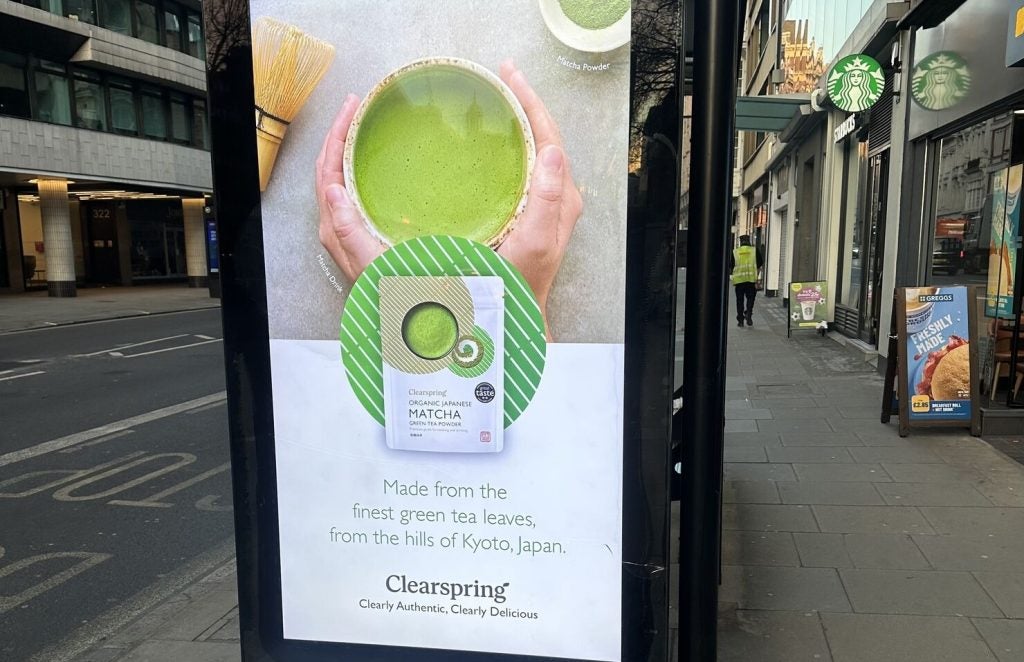
Early days in retail
Matcha companies remain upbeat. Clearspring, a UK-based supplier of Japanese foods, recently ploughed investment into its first out-of-home campaign for its matcha, a decade after launching its products, which are mostly sold into retail.
“We’ve seen a steady growth throughout those ten years and it’s still growing well and hence that’s why we decided to even do our very first out-of-home campaign,” Clearspring MD Maria Dawson says. “We’re seeing almost 30% of growth still year-on-year.”
OMGTea is another UK matcha business optimistic about the category’s prospects. The company, set up in 2014 and based in Hove in southern England, predominantly sells into retail, a channel “growing massively at the moment”, founder Katherine Swift says.
The firm’s principal retail customers are Amazon, plus the upmarket chains where matcha has most taken root in the UK: the likes of Ocado, Whole Foods Market, Holland and Barratt and Selfridges. Swift believes larger, mainstream chains will look to build on the odd one or two SKUs they may have on shelves.
“I think they will. I think the problem that you’ve got is a product like ours that is at the premium end [and] it’s probably still a little bit too soon. The category probably needs to develop a little bit more before they take the plunge and they have a more premium offering on-shelf,” she says. “But I think it’s happening. I also think the fact that matcha is powdered means it’s really versatile, so there’s opportunities to do lots of different applications with it as well.”
In the UK, PerfectTed, backed by Dragon’s Den investor Steven Bartlett, is perhaps the one matcha brand that has been able to break into grocery retail, with, at times, its RTD lines featuring in Tesco’s ‘meal deal’ offer and its powdered matcha available in chains including Sainsbury’s and Marks and Spencer. In February, the London-based firm added to its RTD range with the launch of two flavoured matcha lattes.
Swift sees RTDs as a way of matcha making strides in grocery retail – but offers a caveat. “Further down the line, once more people are into it and they’re upgrading from a basic matcha to a more premium one, the supermarkets will list more premium products. In the short to medium term, it needs to be matcha applications, something that makes it not as expensive on shelf and a bit more accessible to those who might be wanting to try matcha for the first time,” she explains. “I do think the problem is obviously the ready-to-drink category is so competitive and so many drinks fail but I think that’s obviously an area for opportunity where people will be happy to pay £2.50, £3 ($3.31, $3.97) just to have a ready-to-drink matcha product, or some lower grades with products blended in.”
There is a huge space in retail because we’ve seen the demand in our sites
Amy Moulsdale, Grind
London-based coffee-shop chain Grind is dipping its toes into the retail matcha category, launching a matcha collection through the direct-to-consumer channel in February.
“It’s quite clear that the demand is there. We’ve seen a lot of matcha cafes that do solely matcha that have gone from not been too busy to being extremely busy. We’ve also seen our sales of the drinking matcha from 2023 to 2024 increased by about 80%, which is wild. It would be silly for us not to jump on it,” Grind coffee manager Amy Moulsdale says.
Grind already sells coffee products in retail, with customers including Ocado. Moulsdale echoes the point that supermarket interest in matcha remains low but believes the popularity of the products in foodservice should encourage buyers. “There is a huge space there because we’ve seen the demand in our sites,” she adds.
OMGTea, meanwhile, is trying to build the presence of its matcha powders in the foodservice channel. “The growth of the foodservice category for matcha is really big. Every street corner in London, the coffee shops aren’t advertising coffee, they’re advertising matcha products,” Swift adds.
At the hospitality-focused Newby Tea, Aslakhanova argues foodservice will remain the principal market for powders, simply because of the challenge of making matcha tea. “Hospitality definitely would be a stronger market for this to develop,” she says. “Matcha is still something that is very difficult to make properly. You have to know how to actually whisk it, how to make it properly if you are drinking it pure, which is what we try to promote, mostly.”
Identifying markets
Outside the UK, there are markets of interest to matcha brands. Clearspring already sells its matcha across the English Channel. “We’ve definitely seen good growth in the European market, looking at places like Belgium, Holland and a lot in the Scandinavian market as well,” Dawson says. “The Middle Eastern countries, matcha’s definitely in growth there, too.”
OMGTea “does a little bit overseas but not much”, Swift says, adding the impact of Brexit hit the company’s business on the Continent. The firm, majority owned by its matcha supplier Aiya, is looking to rebuild its position in Europe. “Germany’s big. France is getting bigger. Spain, for example, Mercadona, they have their own-brands single-serve sachets on the shelf. It’s growing across the whole of Europe,” Swift says.
The US is also held up as a dynamic market for matcha. “Demand for matcha products is growing in the US. Pricing is for the most part at the premium levels but the consumer segment that’s interested in specialty and better-for-you-beverages doesn’t seem to mind the higher pricing,” Victor Martino, founder of US consultancy Third Wave Strategies, says.
The shape of the market in the US mirrors that seen across the Atlantic. “Natural and organic outlets probably stock the most variety but supermarkets aren’t far behind,” Martino explains. “Specialty and natural products online retail outlets like Thrive Market, Amazon and others also are a growing channel for the purchase of matcha products. Additionally, in recent years, specialty matcha cafes and tea shops are becoming more common.”
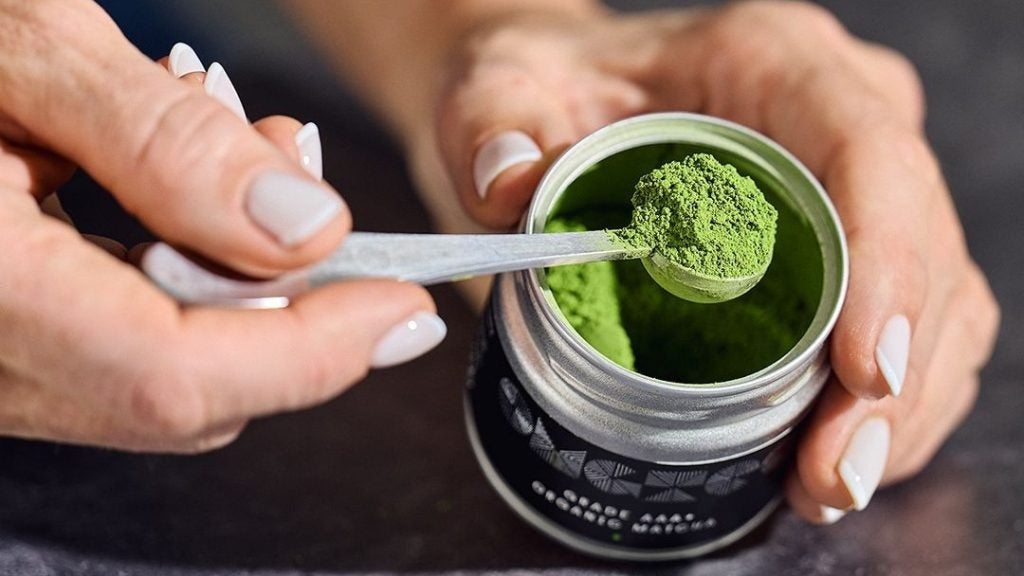
Shortage fears
In recent weeks, mainstream headlines have turned to how the rising demand for matcha could affect supplies from Japan. ‘Skyrocketing’ demand for matcha raises fears of shortage in Japan, The Guardian reported. Japan Can’t Produce Enough Matcha Tea as Global Popularity Booms, Bloomberg said.
Given the backing OMGTea has from Aiya, Swift is sanguine about the situation. However, she adds: “There is potentially going to be a shortage, the growth is outstripping the production capacity at the moment. Watch this space,” she says. “I think already there are some companies struggling to get hold of the product in cans and that kind of thing that they maybe were able to get really easily a year ago.”
There is potentially going to be a shortage. Growth is outstripping the production capacity at the moment
Katherine Swift, OMGTea
At Newby Teas, Aslakhanova says it could become more difficult to source certain varieties. “I think the Japanese are struggling to cope with the demand, and the prices are rising of good quality [matcha],” she says. “It’s going to be harder and harder for companies like ours, where we look only for premium products to find the best of the best quality, because there’s just not going to be enough of it, and everyone would want to share.”
However, in the main, there is confidence among matcha businesses about the prospects for the category. “Well, I mean the fact that we’ve just done our very first out-of-home campaign on matcha, I think that answers your question that we still see a big, big opportunity when it comes to matcha,” Clearspring’s Dawson says.
In the US, Martino suggests the pressure on supplies “could splash some cold water on the expected sales growth” but adds: “I see strong prospects for growth over the next three to five years. The key trends are health and wellness and matcha’s perceived coolness among younger consumers. Brands can capitalise by increasing distribution in more mainstream retail outlets, along with putting a better focus on alternative outlets.”
Over at Grind, matcha features heavily on its new iced-drinks list for the English summer and the coffee-shop chain is also using the tea in dishes like tiramisu. “It’s just a super versatile product. It’s definitely got more scope. It’s already taking a huge part of our new menu that I just launched,” Moulsdale says.
There are, however, notes of caution in some quarters. “I do think this trend has been growing very rapidly but whether it’s going to continue, I don’t know, because I think at this point – and this is my personal opinion – there’s an over-saturation of the market with matcha products,” Aslakhanova says.
For now, the major players in coffee appear to be keeping something of a watching brief. “We have matcha options as part of our beverage portfolio, primarily in Japan. It is a trend that has gained significance over the years, especially among younger consumers. However, it remains relatively small in the global coffee market so far,” a Nestlé spokesperson says.
Acda believes brands need to identify certain parts of the market. “Iced matcha lattes, sparkling matcha drinks, they’re growing fast in convenience retail,” he explains. “It’s more, I would say, on-the-go that is more of the growth space; it’s convenience, urban [centres], that’s where most of the traction is.
“If you play in convenience retail, if you play in foodservice, if you play in ready-to-drink, there’s pockets where you can generate growth. The fact whether this is going to take over the world in the next few years, I don’t think so.”


